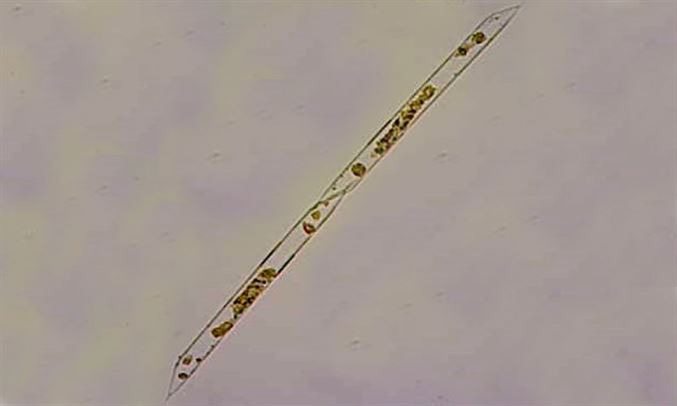The cells are cylindrical, rod-shaped, with valves that are not slanted but rather conically shaped, curving at the apex. The cells have a diameter ranging from 6 to 53 µm and can reach a length of nearly 1 mm. The intercalary bands are scale-like and rhombic in shape. In smaller individuals, they are arranged in two dorsiventral rows, while in wider forms, there can be up to eight or more rows. The imbrication lines are challenging to discern. The cell features a robust process that gradually tapers in size from the base to the tip and curves like a claw, lacking any wings. The cell wall is thin and possesses weak silicification, with very delicate punctation. The puncta on the valve number between 22 and 24 per 10 µm, while on the intercalary bands, there are approximately 20 to 23 puncta per 10 µm. The cells contain numerous small chromatophores.
